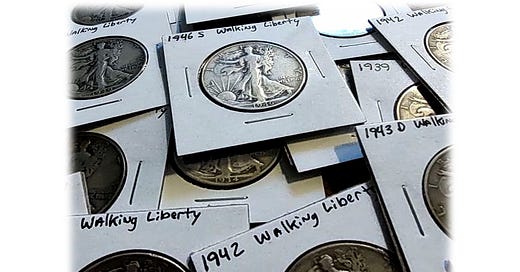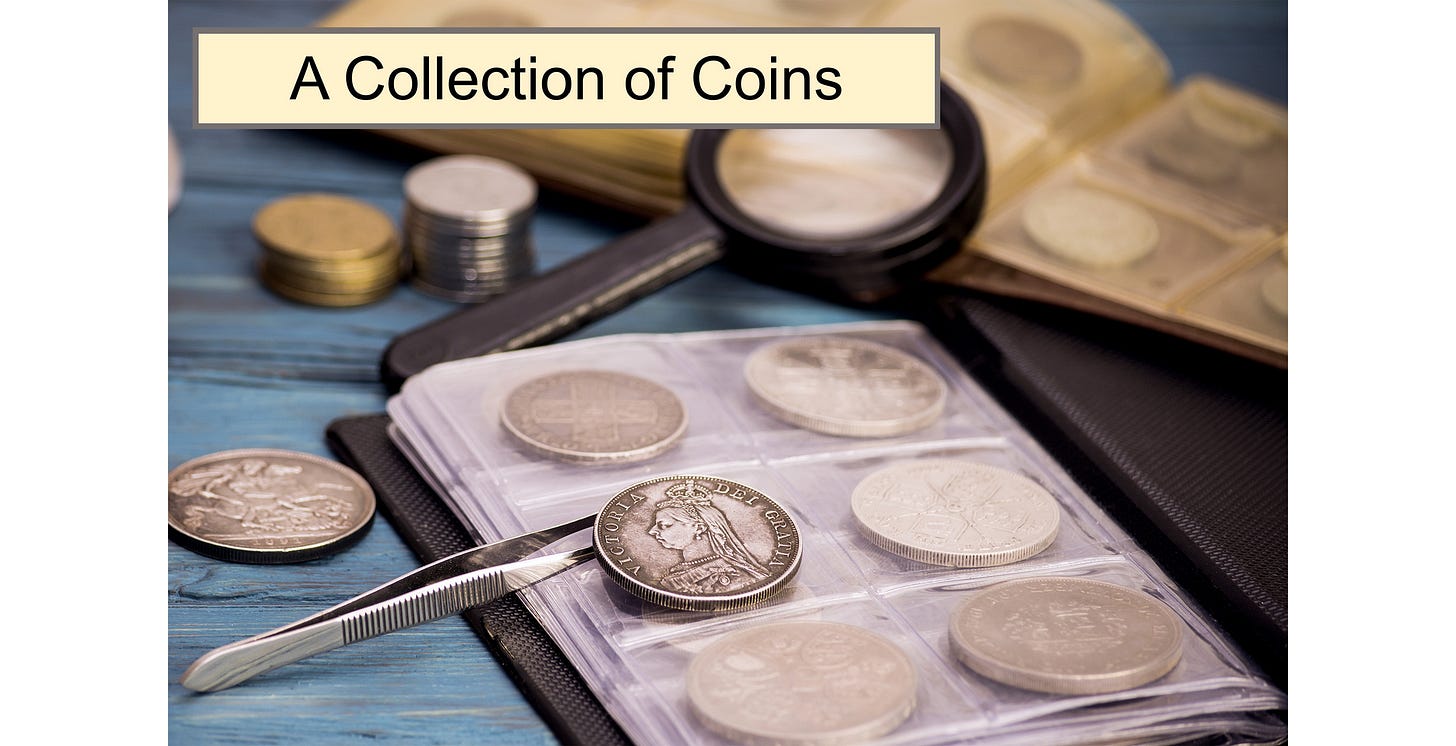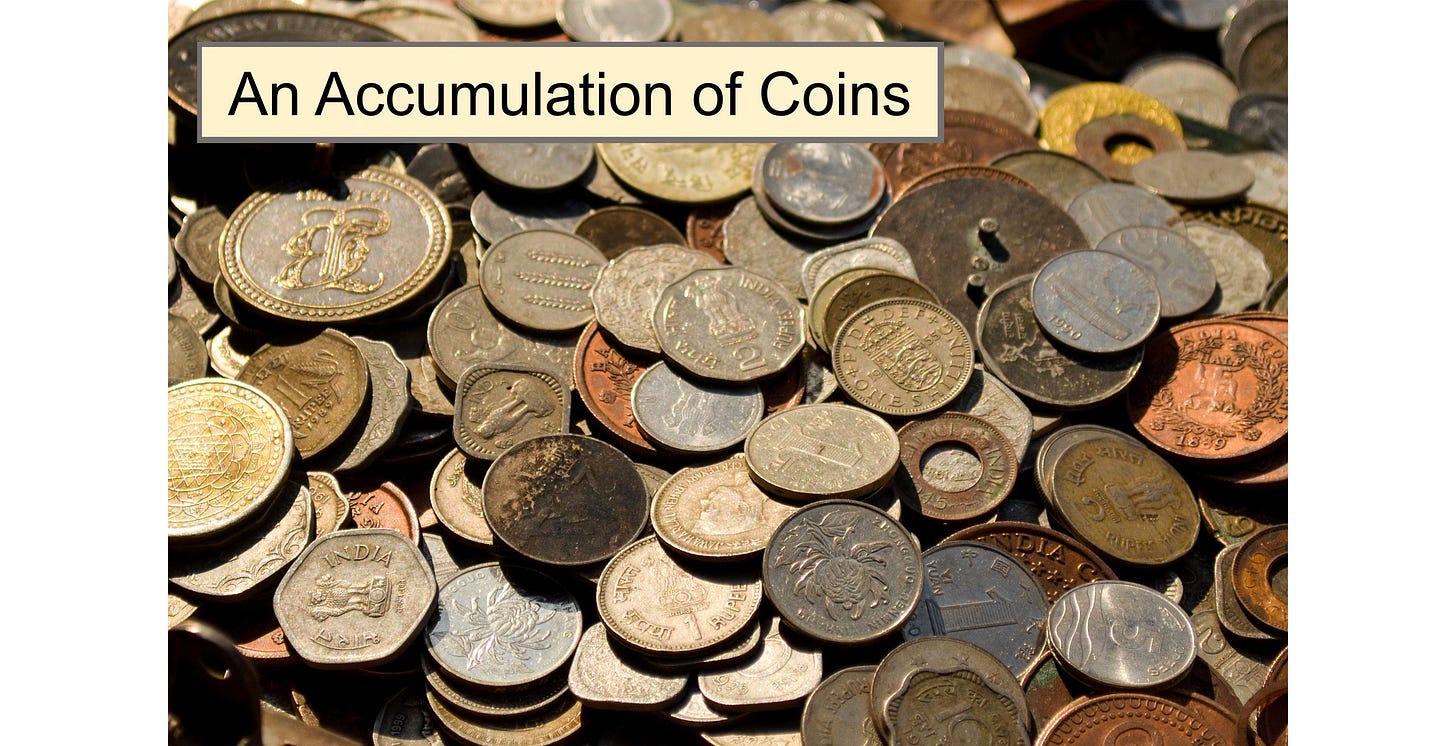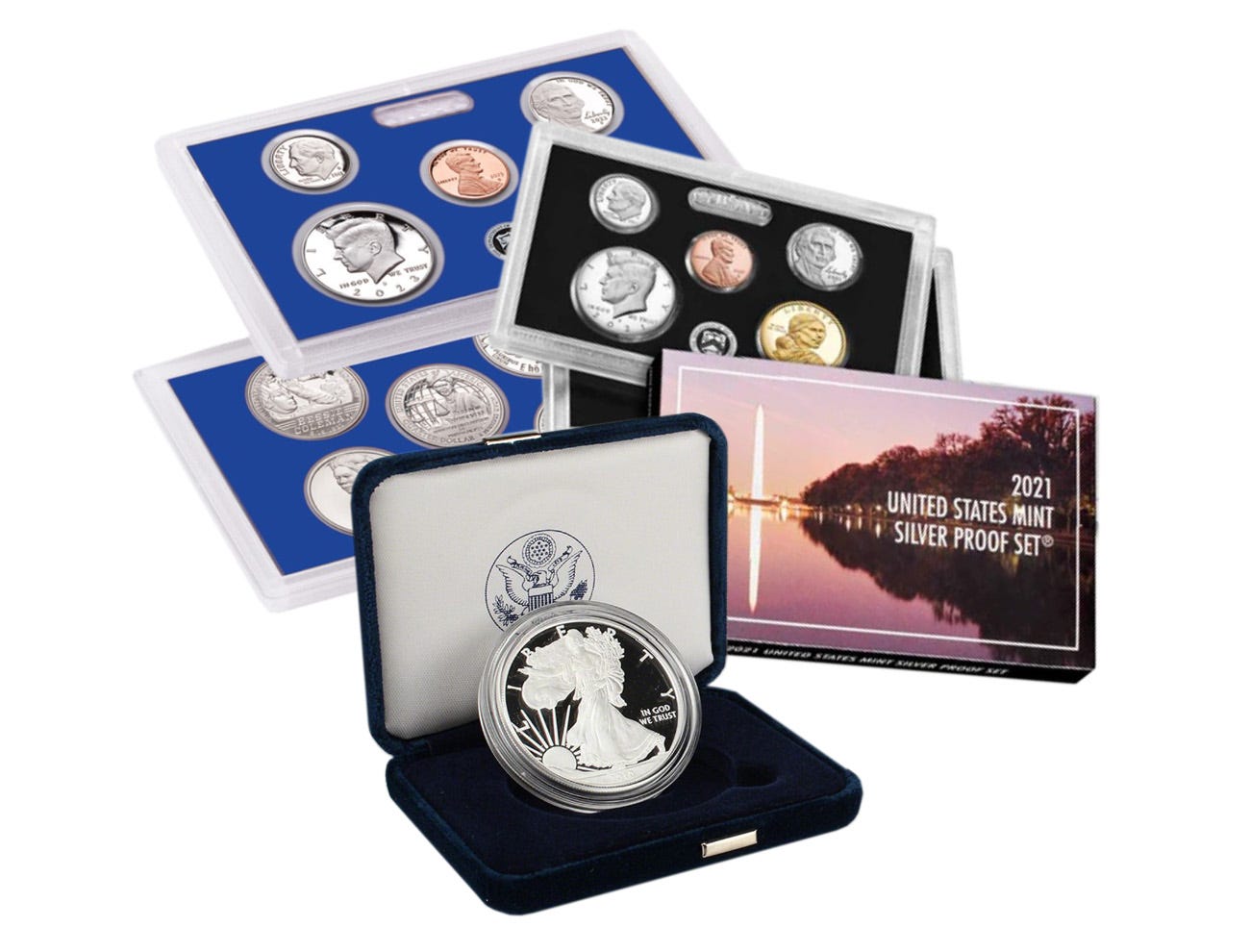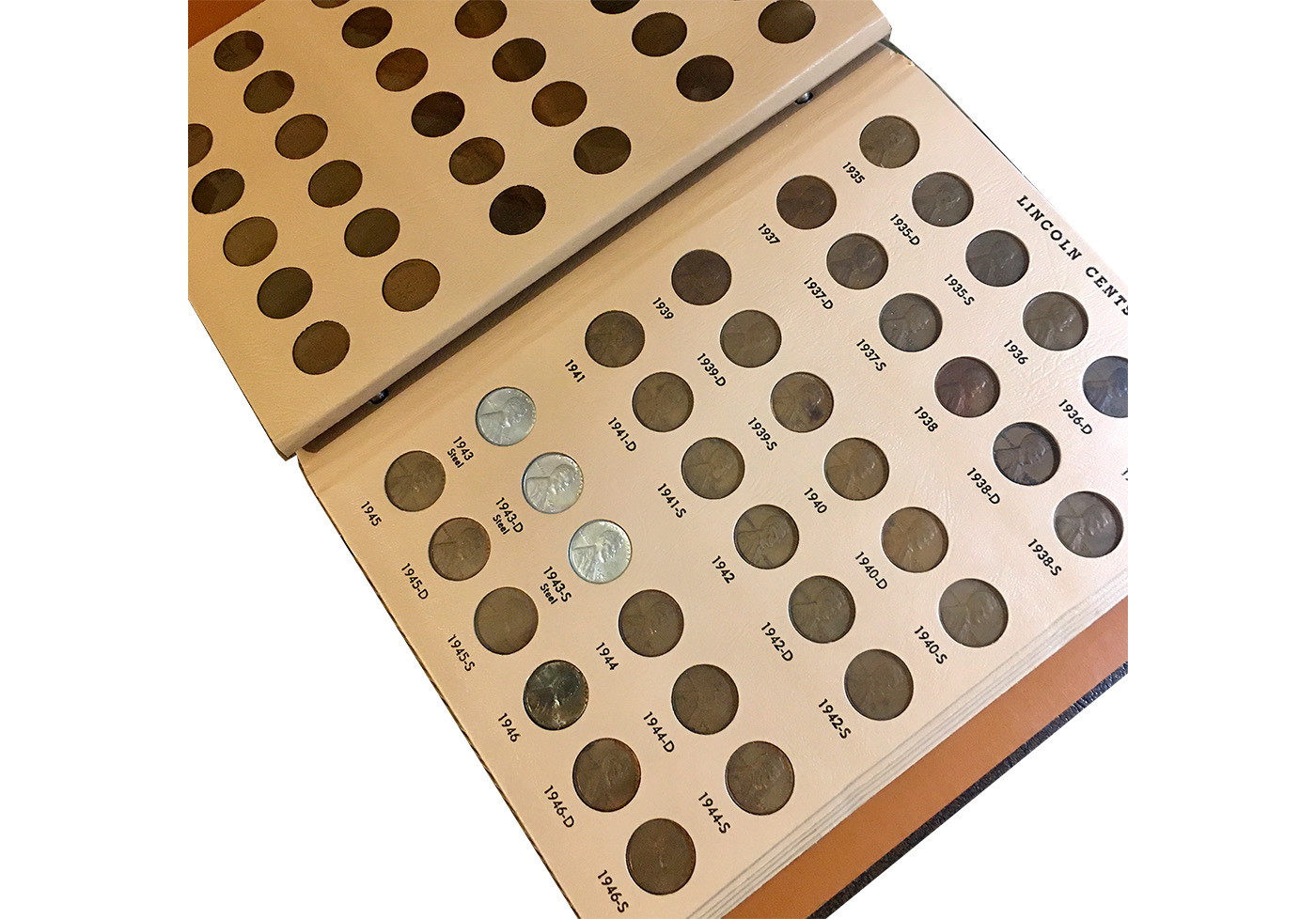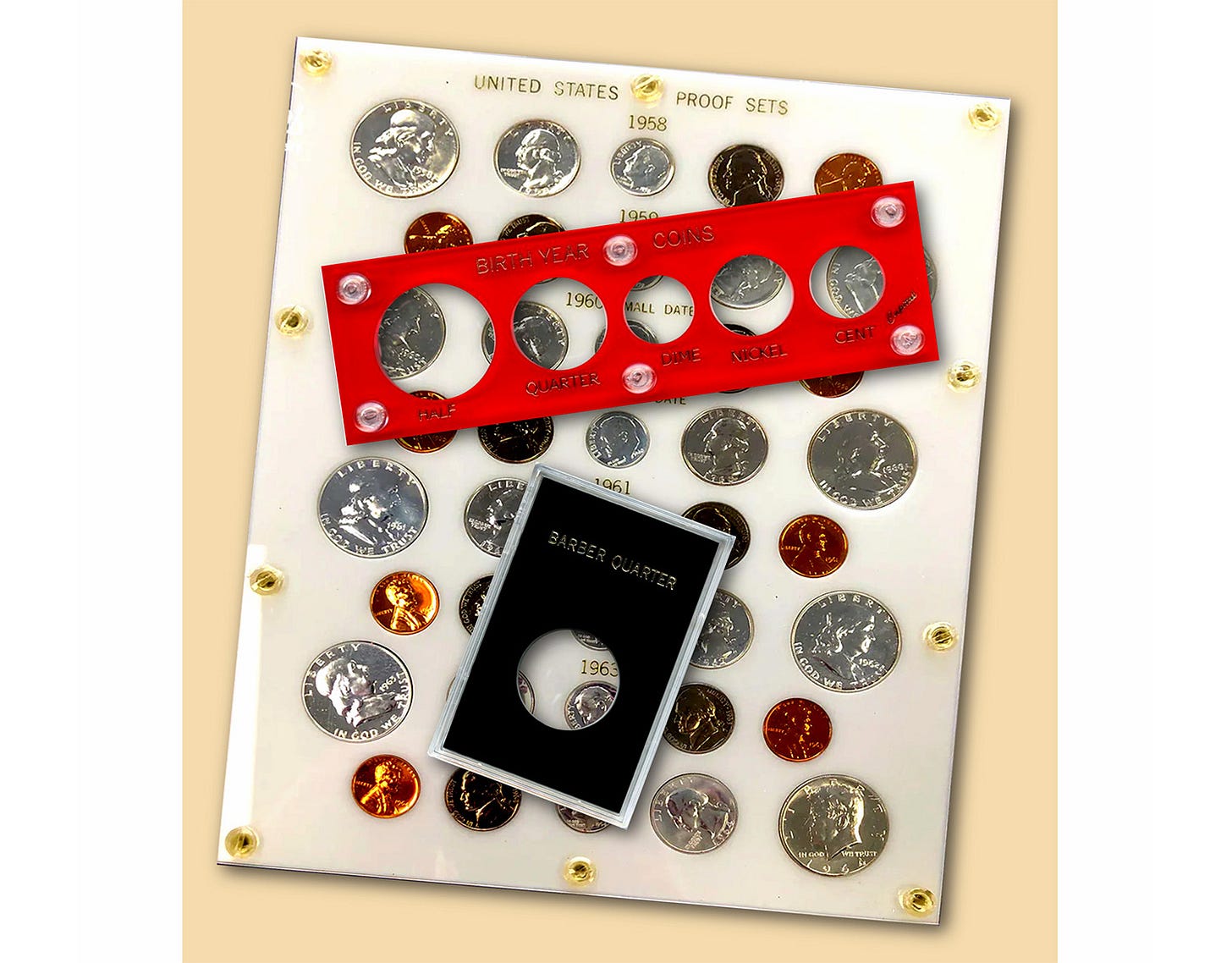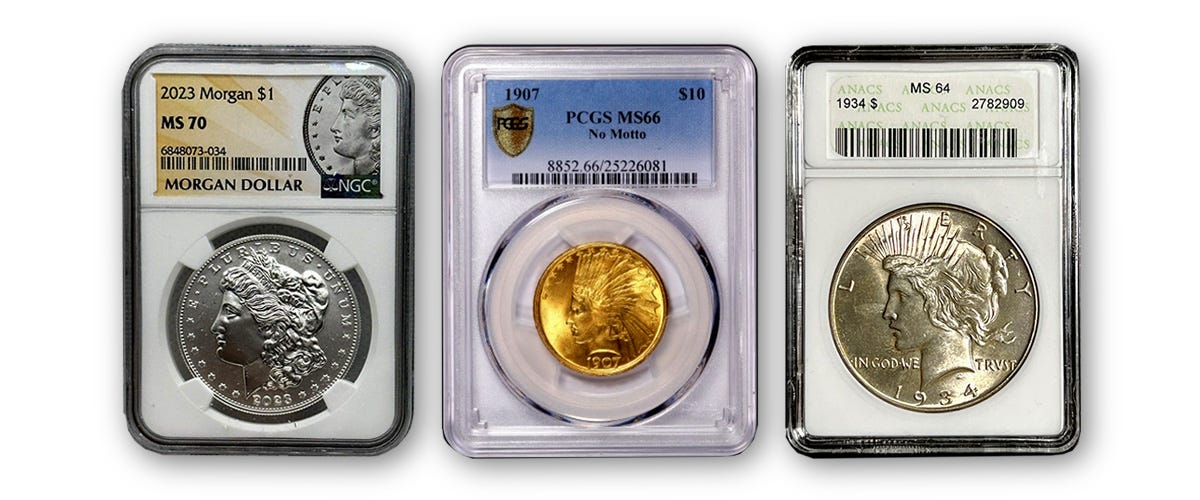Our CoinQuest website is about coin appraisal. In other words, “What is my old coin worth?” Coin holders tell part of the story, and we discuss them now.
Don’t get me wrong. A coin holder contributes nothing to a coin. All value is in the coin and the coin holder has no value. Even fancy, expensive, top-end holders are worth zero when it comes to selling a coin. A coin must stand on its own merits, despite its holder. However, if you are not sure about the value of a coin, holders provide insight into the likelihood that a coin is valuable.
This graphic shows the breakdown:
Coins in numismatic slabs are much more likely to be valuable than loose pocket change.
The discussion which follows addresses the different types of holders and how they help people — collectors and non-collectors — get an idea of coin value.
First, Is It Really a Coin Collection?
When confronted with a bunch of coins, be sure to know the difference. There are coin collections and there are coin accumulations. Just about everyone has an accumulation of coins, but very few people have an actual coin collection.
Coin collections are organized. They have been carefully assembled by diligent numismatists (people who study and collect coins) and are always housed in some type of holder. The holder might be a combination of simple cardboard squares, book-style albums, coin tubes, plastic boxes, government-issued packaging, or fancy, hermetically sealed numismatic slabs.
Coin collections are almost always valuable. They are valuable because numismatists carefully consider individual coins and select certain ones to add to their collections. Perhaps a coin bears a particular date, or perhaps it is made of precious metal (gold or silver), or it is in especially good condition, has great eye appeal, or is unusual or interesting in some way. These are reasons collectors add coins to their collections.
Compare that to a typical coin accumulation. In this case there are no numismatists involved. Instead, the “collector” simply throws coins into a bucket and declares “this is my coin collection.” Nope. It’s not! It’s your coin accumulation. Unless there are gold or silver coins present, accumulations are almost never valuable.
What do you have? A collection or an accumulation?
A sure-fire way to confirm that you have a coin collection is its associated paperwork. Accumulations have no paperwork. Actual coin collections always have catalogs, magazines, books, newspapers and similar reference materials close by. Most collectors make written inventories which list each coin separately. Such inventories are very helpful when trying the evaluate a collection, even when the numismatist is not present. You might be puzzled about the value of each coin, but, rest assured, the numismatist is not.
2x2 Holders
Collectors like to call the simplest of coin holders “two-by-twos” or “2x2s.” They measure 2 inches by 2 inches and are made of various materials such as cardboard, semi-flexible vinyl, mylar, cellophane or molder plastic. Note that fully flexible polyvinyl chloride (PVC) plastic is detrimental to coins and must not be used for coin holders.
The most popular type of 2x2 is made of white cardboard with mylar interior and held together by staples. Coin dealers use these all the time to store and protect their inventories, and collectors enjoy looking through hordes of 2x2s for that particular gem to add to their collection.
Other types of 2x2 holders are called “flips,” “pockets” or “capsules” as shown in the image above.
A coin in a 2x2 is much more likely to be valuable than a normal, loose coin. There is a faint possibility that a loose coin is valuable, but the probability of significant value is extremely low. If a coin dealer or coin collector has selected a coin and put it in a 2x2, then it certainly carries some type of value over and above face value.
Multiple 2x2s
If a single 2x2 is good, then multiple 2x2s must be better. Right? Yes. This is true. Boxes and books are available to house multiple 2x2s in one place. The face that a collector has spent time and money to create these items with special coins is a good indication that the coins carry decent value.
Mint Products in Original Government Packaging
The next type of coin holder is “Original Government Packaging” or OGP. The illustration below shows some examples from the US Mint. They come with fancy printed material and official-looking “Certificates of Authenticity.” But remember, 100 percent of the value is in the coin, zero percent is in the packaging.
Many people succumb to the hard-sell tactics of government mints. The US mint is particularly forceful in its advertising. “Buy this beautiful coin now, give it to your grandchild, and soon it will become very valuable.” It turns out, in this case, “soon” means about 4 generations. For instance, proof sets purchased during the 1960s are now just starting to rise a few dollars above inflation.
Even though modern mint products are exceedingly gorgeous, and even though they are housed in exquisite OGP, the hard truth is that they are not worth very much relative to their high initial cost. For instance, US Mint “proof sets” and “mint sets” (mint sets are also known as “uncirculated sets”) contains high-quality examples of each type of circulating coin. They are worth about $8 each today, and that’s a big let-down from the high initial price of $30 or more. On a happier note, modern silver proof sets, which contain generous amounts of the precious metal, sell for about $125, and that is roughly what you can buy them for at the mint. They have maintained their value due to precious metal content.
In our hierarchy of coin holders, we placed Original Government Packaging above 2x2s because mint products tend to have substantial quantities of gold and silver, which always imparts high value to coins.
Coin Albums with Dates and Mint Marks
Coin albums, sometimes called “coin boards,” list every coin in a particular series. An album for Lincoln wheat-backed cents, for instance, runs from 1909 to 1958 and has holes for every date and mint mark produced by the US Mint. Young numismatists usually cut their teeth by filling albums from circulation, a celebrated pastime.
Partially filled albums are rarely valuable, since the holes remaining represent coins that are difficult to find. But, if an album is completely filled, or at least nearly so, there are sure to be some “key date” coins in the album and the album will be valuable.
Many young collectors, when they finally reach the point of wanting to sell some of their collection, may take their treasured albums to a coin dealer with the idea trading old, common coins for a few special, rare coins. But they are disappointed when the dealer ignores all the coins in their albums except the key dates. In other words, the only coins that “count” in an album are the keys, all the rest are without value.
In summary, albums are great holders, but they have value only when almost completely filled and include several key dates in the series.
Hard Plastic Holders
Two types of holders remain in our “probably valuable” hierarchy:
Hard Plastic Holders
Numismatic Slabs
By far, the most popular hard plastic coin holders are made by Capital Plastics of Middlefield, Ohio. These holders have been a favorite of collectors for a long, long time, and cherished coins usually find their way into Capital holders for safekeeping and proud, prominent display.
If a collector thinks enough of a coin to buy a Capital holder for it, you can be sure it has decent value. Only coins placed in numismatic slabs can beat out Capital holders!
Numismatic Slabs
The most popular type of hard plastic holder is called a “numismatic slab.” Here are three examples:
Coins in numismatic slabs have been selected by numismatists and sent away to reliable third-party services for authentication (real or fake), grading, and hermetically sealed encapsulation. It is the highest honor you can pay to a collectible coin, and, as such, the probability that a slabbed coin is valuable is the highest of all the holders.
It is important to understand the company that makes the slab. The two big ones are PCGS and NGC, and you can see their company names clearly on the slab. Other, lesser-known slabbing firms are ANACS, ICG, and SEGS, and all other slabs are considered “plain” holders because, in numismatic circles, only PCGS, NGC, ANACS, ICG and SEGS have reputations for reliability and accuracy. If a coin is slabbed by a different company, it is the same as being in a 2x2.

